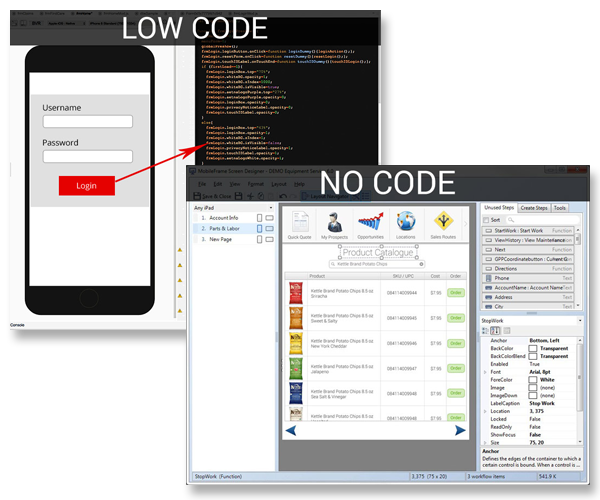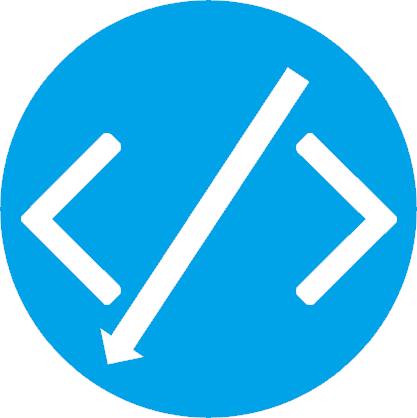Handy Tips For Deciding On Legacy application modernization with Low-code
Wiki Article
Benefits Of Low-Code Development In Terms Of Speed
The development of applications using low-code significantly improves development speed due to several crucial factors. Development Environment:
Drag-and-Drop Interfaces: Low-code platforms provide visual tools for designing applications. Developers can build applications using drag-and-drop components without writing code.
Pre-built Templates and Components A number of low-code platforms include already-built templates and components which allow developers to rapidly prototype and build applications without having to start from scratch.
Coding requirements that are less invasive:
Automated Coding Generation: Low-code platforms generate code automatically based on the visual model designed by developers. This reduces the need for manual code coding and speeds up the development process.
Reusable Components: Developers are able to use reusable components across different projects, which reduces the amount of time spent on writing and testing code.
Collaboration is streamlined:
Low-code platform tools typically contain versions control, testing deployment. This allows for the seamless communication between teams.
Citizen Development: People who are not developers and business users can use simple interfaces to help in the development of applications which can reduce bottlenecks caused due to a shortage of professionals to develop applications.
Rapid Iteration and Prototyping
Rapid prototyping: Developers can create quickly prototypes in order to gather feedback and validate ideas, resulting in faster cycles of iteration.
Simple Modifications - The visually appealing nature of low-code applications allows for simpler updates and modifications which speed up the refining of applications based on user feedback.
Pre-built Integrations:
API Integrations Low-code platforms include prebuilt connectors that are compatible with the most popular APIs or services. They cut down the time it takes to integrate external applications.
Data Integration: Built in tools for data integration simplify the connection to databases and data sources. This helps speed up development.
The deployment of scaling:
Many low-code platforms have the option of deploying applications with one click, which reduces the amount of time and effort required to install applications.
Cloud-based Platforms: Cloud-based platforms which are low-code can manage infrastructure and scaling, meaning developers can concentrate on the the logic and performance of their applications rather than the logistics of deployment.
All in all, low-code development offers advantages in terms of speed because of its capability of automatizing and simplifying a variety of elements of development. This allows faster development of apps as well as easier adaptation to evolving needs. Check out the top Low-code Platform for application development for blog recommendations including build with docker, rapid app development, develop mobile application, rapid applications, application modernisation, azure sql server, cross platform mobile development, cross platform app development, application modernisation, developing mobile apps and more.

The Advantages Of Low-Code Development In Terms Of Scalability, Flexibility And Scalability
Low-code applications have a number of advantages when it comes to scalability. They are flexible and able to be adjusted to accommodate new needs. Here are the main benefits: Rapid Scaling:
Cloud-based deployment: Many low-code platforms are cloud-based which allows applications to grow effortlessly with the cloud infrastructure. Businesses can handle more load without having to worry too much about server administration.
Auto-Scaling Features - Built-in auto scaling features automatically adjust resources in accordance with the demands. This provides continuous performance, even during peak periods without manual intervention.
Flexible Architecture:
Modular Design: Low-code systems promote modular application design, where components can be independently developed test, scaled, and then redesigned. This modularity is a great method to improve flexibility. It is also easy to upgrade and expand components of an application without having the entire application affected.
Microservices Integration : To support microservices architecture, applications may be developed using loosely-coupled services to improve capacity and flexibility.
Solutions that can be customized:
Extensibility: Low-code platforms typically permit custom programming and scripting, allowing developers to expand the capabilities of the applications beyond what is available out-of-the-box. This allows developers to satisfy their unique business requirements without any restrictions.
Third-Party Integrations: Integration with third-party APIs or services allows businesses to add additional functions to their applications.
Agile Development and Deployment
Continuous Deployment and Deliver: Low-code platforms are able to support agile methodologies, which allow continuous deployment and integration (CI/CD). This lets applications be updated and upgraded quickly as a result of user feedback.
Iterative Development: This low-code approach lets applications be upgraded and scaled gradually which lowers risk and allows for a more controlled growth.
Resource Optimization
Effective Resource Management: Low-code systems assist optimize resource usage by providing tools for monitoring and managing the performance of applications. This helps ensure that resources are utilized efficiently. They are also able to be scaled-up or reduced depending on the needs of the user.
Load-balancing: The program is able to handle large volumes of traffic with ease and consistency thanks to the integrated load-balancing capabilities.
Global Reach
Multi-Region Integration: Low code platforms can be deployed across multiple geographic regions. This allows businesses to offer users high-quality, low-latency services across the world. This is of particular importance when it comes to applications that have an international user base.
Support for Localization The built-in support for localization allows applications to be easily adapted to different languages and the requirements of various markets.
Maintenance and updates
Simplified maintenance: The visual and module design of low-code applications makes it easier to complete the maintenance chores. They allow updates and bug corrections to be carried out quickly without lengthy downtime.
Version Control: Integrated version control systems aid in managing rollbacks and changes, ensuring that updates are deployed in a safe manner and older versions are restored when needed.
Cost Efficiency:
Lower development costs: Low-code systems enable a reduction of the development costs by removing the requirement to code extensively. This enables applications to be scalable without an increasing costs or development time.
Pay-As.-You-Go: Many lowcode platforms provide flexible pricing models, such as pay-as.-you-go. They align costs to actual usage and growth in order to give financial flexibility.
In general, low-code applications developers provide a high degree of flexibility and scalability that lets businesses quickly create scalable and flexible applications. These platforms can respond quickly to changes in requirements, resource efficiency, and continuous improvements, allowing for the development of applications to evolve with a business. Follow the recommended wavemaker.com coding for blog tips including multiplatform mobile app development, cloud software applications, rad development, azure sql server, application modernization software, cloud software applications, ms azure sql, application development platforms, low code platforms, push alerts and more.

Support From Vendors And Community Are Two Of The Advantages Of Low Code Application Development.
Low-code platform development offers significant advantages, including support from vendors and a community support. This is crucial in ensuring successful application development as well as ongoing maintenance and constant improvement. Here are a few of the advantages.
Comprehensive Technical Support:
Support Teams with Dedicated Support A lot of low-code platforms have dedicated support teams that can assist with technical issues, problem-solving and provide guidance. This will ensure that any issues will be quickly resolved.
24/7 Support Certain vendors are accessible 24/7 and this is helpful for businesses operating in multiple time zones.
Training and Onboarding
Vendors often provide structured programs for users, such as tutorials and webinars. They can also offer training courses for certification.
Personalized Onboarding: Many companies offer customized onboarding services that help new customers implement the platform effectively and tailor it to meet their requirements.
Regular Updates and enhancements:
Continuous Improvement Platform vendors typically release regular updates with new features, performance improvements as well as security patches. This ensures that the platform is up-to date and secure.
Feedback Integration: Many vendors incorporate user input in their process of development. This helps ensure that the platform adapts to the changing demands and needs of their users.
Comprehensive Documentation:
Documentation is thorough: Users are usually able to access extensive and well-organized documents, which range in terms of complexity from basic modification to advanced.
API References API documentation provides complete API references to help developers integrate their low-code platform applications with other systems.
Consultancy and Professional Services
Expert Consultation : Vendors offer consulting services, such as the design of architectures and complicated implementations. They provide this service to ensure that users can fully benefit from the platform.
Custom Development: Some companies offer services that permit them to develop specific features or systems that aren't offered out of the box.
Community Support for the Community
Active User Community:
Discussion and Forums: Many Low-code platforms feature vibrant online communities, where users are able to ask questions, debate strategies, and even collaborate with one another on the best methods.
Local and virtual User Groups: These groups offer opportunities to meet, network, and share experiences.
Knowledge Sharing & Collaboration:
Community-Contributed Resources: Users often share templates, modules, and extensions that they have developed, which can be reused or adapted by others, accelerating development and innovation.
Crowdsourced problem solving: The collective experience and knowledge of the community is a valuable resource when troubleshooting issues and coming up with innovative solutions.
Learning and Development
Community-led training: Many community groups offer training sessions, webinars and workshops led by experts who are experts in their area.
Online Courses and Tutorials: Community members frequently create and share online courses, tutorials and how-to guides, improving the learning resources available to all users.
Feedback and Influence
Product Feedback Channels. Forums for community members usually have channels where you can provide feedback to the company. Feedback from customers can influence the design and development of new features.
Beta Testing: Members of active communities could be able to participate. This lets them gain early access and be involved in the creation of the platform.
Recognition and support:
A lot of vendors offer community recognition programs for community recognition. These programs honor active members of the community and also include MVP programs.
Peer Support. Community members offer assistance to each other. They offer their expertise with new users and offer advice. This creates a community of support and collaboration.
Overall, a robust vendor's support and an active, vibrant community provides a complete support system for low-code app development. This ensures that users are able to access the resources, expertise, and collaborative opportunities required to effectively create, deploy, and maintain their apps, ultimately enhancing efficiency and creativity.
